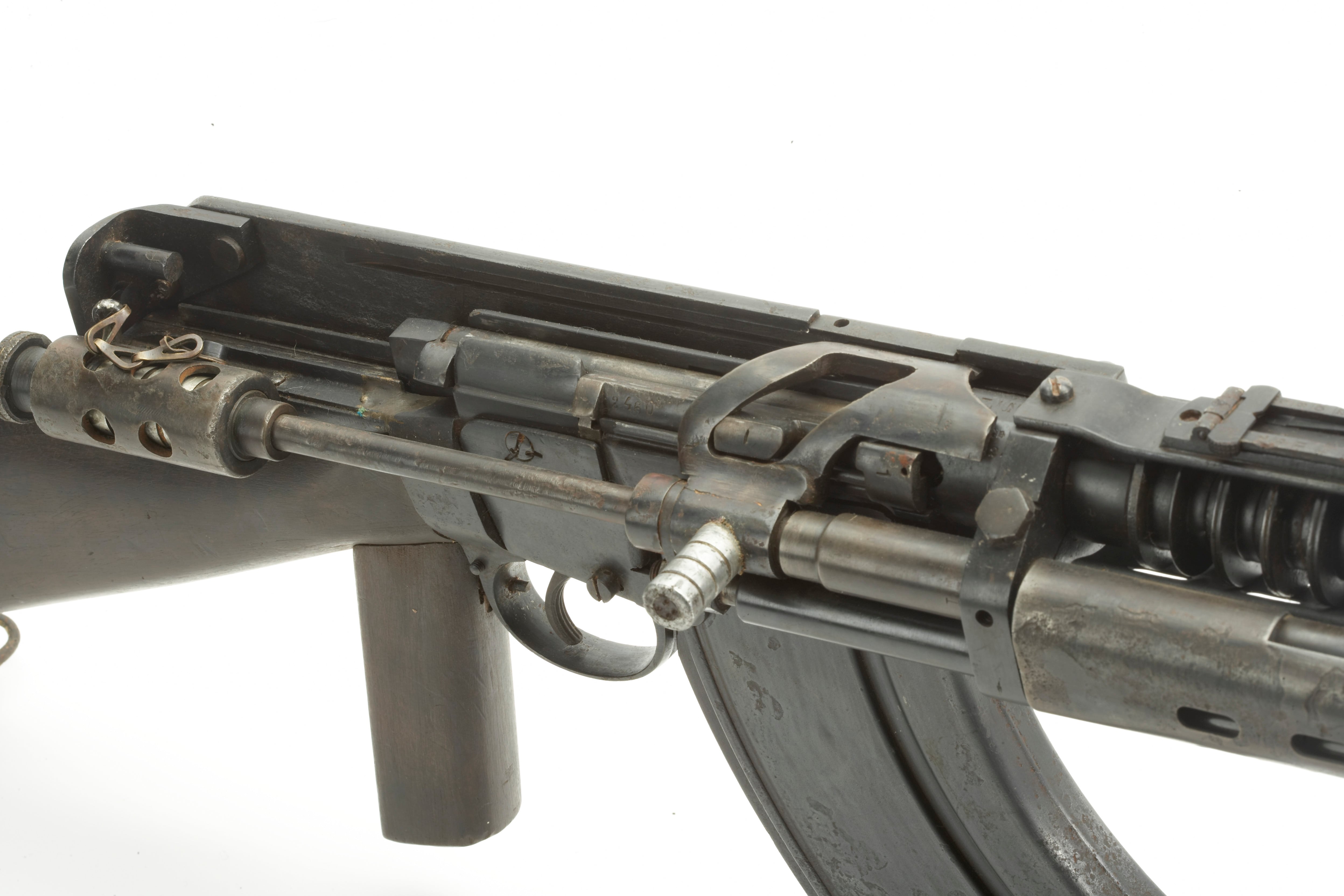One of the strangest automatic weapons devised during World War II was the Charlton automatic rifle, which for all the world looked like an obsolete bolt-action rifle turned automatic through a mechanism mounted mostly outside…which, in fact, is exactly what it was. Strangest thing of all about the weapon was that it worked. Astonishingly well.
When World War II broke out, New Zealand mobilized its army and its Home Guard in the event the conflict should find its way to its corner of the globe. The country had a limited amount of modern weaponry for its regular troops and, in the event that Britain would not be able to supply it, it needed a means of arming its Home Guard.
Enter engineer Philip Charlton, who believed he could turn his 1910 Winchester rifle into a semiautomatic or fully automatic weapon.
He soon dropped the idea because the Winchester’s .401-caliber round was incompatible with New Zealand’s predominantly .303-inch ammunition. Instead, he adapted his system to New Zealand’s supply of Short Magazine Lee-Enfield Mark III bolt-action rifles as well as older, outdated Long Lees and Lee-Metford rifles, converting them all into automatic weapons with a minimum of redesign.
This involved attaching the rifle’s own gas port to an external system comprising a piston tube, gas piston, return spring and charging handle on a guide rod, all installed to the right of and parallel with the gun barrel, on which were added a series of cooling fins. A selector switch installed on the left side of the receiver rendered the weapon safe, semi or fully automatic.
In addition to its external modifications, the Charlton added two pistol grips fore and aft to allow firing the weapon from the hip, as well as a pivoting bipod for use in the prone position.
Firing a .3125-inch bullet at 600 rounds per minute, with an effective range of 1,000 yards and a maximum of 2,000, it normally carried a 30-round Bren magazine adapted to fit, but could still accommodate a 10 or 20 round Lee-Metford or Lee-Enfield magazine, all of which had to be reloaded by hand.

Primitive though the contraption looked, it convinced a financier, Maurice Field, to back its construction in the spring of 1941 and in June Charlton and Field took their invention to Parliament to offer a means of equipping the Home Guard with 1,500 such weapons while freeing up the most modern available weaponry for the regular army.
The demonstration went so well that the government gave them 10,000 rounds with which to develop their design into something capable of mass production and reliability in the field.
Focusing their modifications on the original prototype, Charlton and Field managed to perfect their conception five months later with enough rounds left over for trials in November. Again, these went well enough for the Charlton Motor Workshops in Hastings to be contracted to convert 1,500 outdated rifles to the Charlton pattern in six months.
That requirement was too much to meet in so short a time, but the inventive gunsmiths worked steadily apace after December 1941, when a genuine threat to New Zealand appeared on the horizon, in the person of Imperial Japan. Eventually all 1,500 conversions were completed and allotted to the Home Guard from four depots.
They never got to be tested in combat, but they made it possible for all of New Zealand’s stock of Bren guns to support its army troops throughout the South Pacific.
Australia, even more directly threatened by the possibility of Japanese invasion than New Zealand, was so impressed with the Charlton’s performance that they almost tooled up their Electrolux company to produce its external firing system for adaptation to its own generous stocks of SMLE Mark III rifles, although that version would dispense with the bipod and the front pistol grip.
Full production of the Australian Charlton never materialized, however, before the improving fortunes of war made them unnecessary.
Late in the war, as the Japanese threat had decisively receded, the Home Guard’s Charltons were recalled and stored in the No. 2 Ordnance Sub-Depot at the Palmerston North Showgrounds.
Then, on December 31, 1944, an accidental fire broke out that burned the depot to the ground. Among the losses were almost all 1,500 of the Charlton automatic rifles, leaving only a handful to raise eyebrows in arms museums today.




